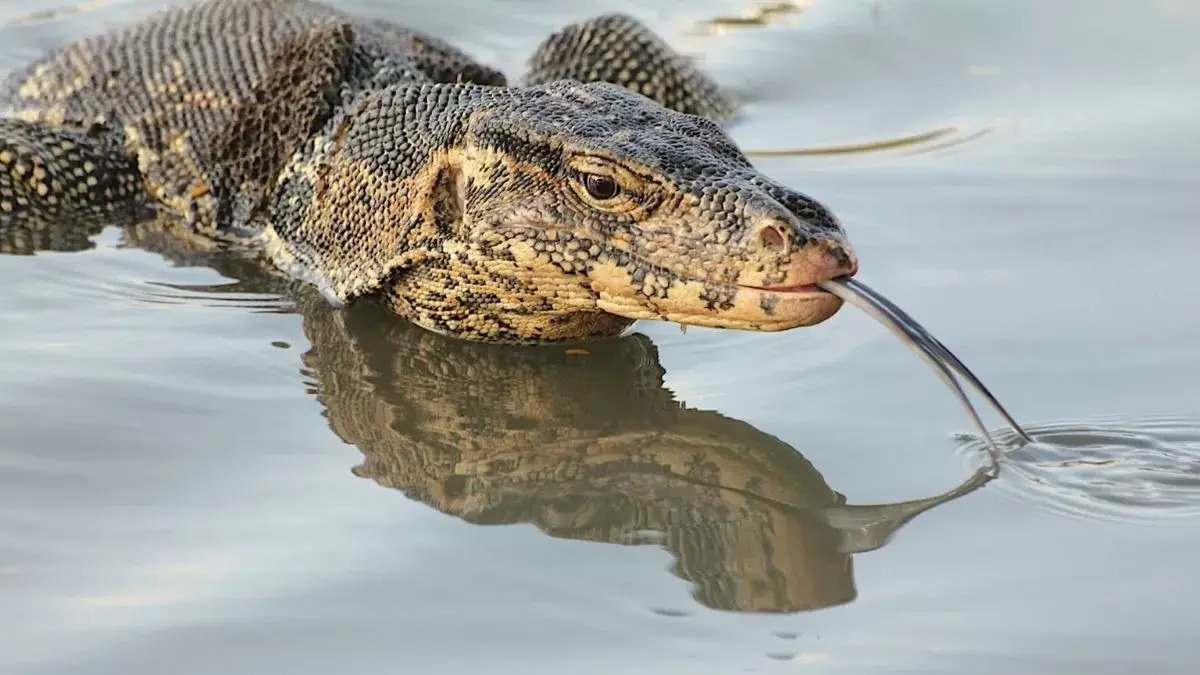Why Are Monitor Lizards So Controversial In Thailand?

Monitor lizards in Thailand stir up quite a bit of debate. These creatures, known locally as "hia," often get a bad rap. Some people see them as pests, while others view them as fascinating wildlife. They can be found in parks, rivers, and even urban areas, leading to mixed feelings among locals and tourists. Their presence sometimes causes fear due to their size and appearance. However, they also play a crucial role in the ecosystem by controlling rodent populations. Understanding why these reptiles are so controversial involves looking at cultural beliefs, ecological impact, and human-wildlife interactions.
Cultural Significance of Monitor Lizards in Thailand
Monitor lizards, known locally as "hia," hold a unique place in Thai culture. These reptiles often stir mixed feelings among locals due to their symbolic meanings and real-life encounters.
Symbol of Bad Luck
In Thai folklore, monitor lizards are often seen as harbingers of bad luck. The word "hia" is even used as a curse word, reflecting the negative connotations associated with these creatures.Guardians of Temples
Despite their bad reputation, some temples consider monitor lizards as protectors. They are believed to guard sacred spaces from evil spirits, adding a layer of complexity to their cultural significance.
Ecological Impact of Monitor Lizards
Monitor lizards play a crucial role in Thailand's ecosystem. Their presence affects various aspects of the natural environment, making them both beneficial and problematic.
Pest Control
These reptiles help control the population of smaller animals like rodents and insects. By keeping these populations in check, they contribute to a balanced ecosystem.Scavengers
Monitor lizards act as natural scavengers, cleaning up dead animals and organic waste. This helps maintain a cleaner environment, reducing the spread of disease.
Human-Wildlife Conflict
Interactions between humans and monitor lizards often lead to conflicts. These encounters can be both dangerous and disruptive, causing tension in communities.
Urban Encounters
As urban areas expand, monitor lizards increasingly venture into cities. They are often found in parks, canals, and even residential areas, leading to frequent human-lizard encounters.Agricultural Threats
Farmers view monitor lizards as pests that threaten livestock and crops. Their presence in agricultural areas can result in significant economic losses.
Conservation Efforts
Efforts to protect monitor lizards are met with mixed reactions. While some advocate for their conservation, others see them as a nuisance that should be controlled.
Protected Species
Monitor lizards are protected under Thai law, making it illegal to harm or capture them. This legal protection aims to preserve their population and ecological role.Public Awareness Campaigns
Various organizations run campaigns to educate the public about the importance of monitor lizards. These initiatives aim to reduce fear and promote coexistence between humans and these reptiles.
Tourism and Monitor Lizards
Monitor lizards have also become a point of interest for tourists. Their presence in certain areas attracts visitors, adding another layer to their controversial status.
Wildlife Tours
Some tour operators offer wildlife tours that include monitor lizard sightings. These tours provide an opportunity for tourists to learn about these fascinating creatures in their natural habitat.Cultural Festivals
In some regions, festivals celebrate the unique relationship between humans and monitor lizards. These events highlight the cultural and ecological importance of these reptiles, fostering a sense of appreciation among locals and tourists alike.
The Future of Monitor Lizards in Thailand
Monitor lizards in Thailand stir up strong feelings. Some see them as pests, while others view them as vital to the ecosystem. Their presence in urban areas has led to mixed reactions. These reptiles play a key role in controlling rodent populations, yet their size and appearance can be intimidating.
Efforts to protect monitor lizards are growing. Education about their benefits and safe coexistence is crucial. Authorities are working on balancing human and wildlife needs. This includes creating safe habitats and reducing conflicts.
Understanding and respecting these creatures can lead to a more harmonious relationship. Thailand's monitor lizards are part of its natural heritage. Their future depends on how well people can adapt and coexist with them. The goal is to find a middle ground where both humans and monitor lizards can thrive.

